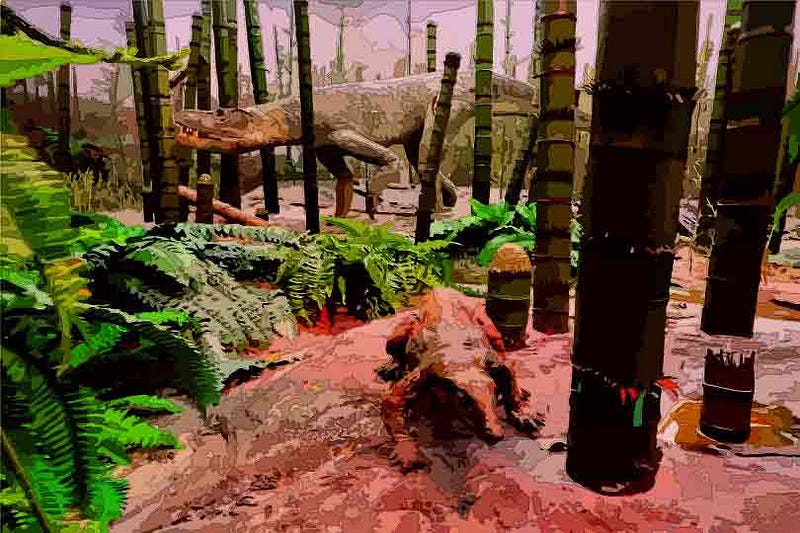The Triassic Era: A Fresh Start After Catastrophe
Written on
Chapter 1: The Dawn of the Triassic Period
The Triassic period emerged approximately 251 million years ago, marking a significant transition in Earth's history. Following the catastrophic end of the Permian period, which was characterized by a series of natural disasters, life faced a precarious existence. However, this dark chapter also set the stage for renewal, as only the most resilient species persisted. As the planet stabilized, it offered a fresh canvas for evolution to flourish.
The Permian extinction, often referred to as the "Great Dying," saw an alarming 96% of marine life and 70% of terrestrial species vanish, succumbing to a mass extinction event. This devastation was triggered by volcanic eruptions that released vast amounts of greenhouse gases and molten rock into the atmosphere, significantly raising global temperatures and leading to ocean acidification. The rapid pace of these changes outstripped the adaptive capabilities of most species.
As the environmental chaos subsided, evolution seized the opportunity to innovate. The Triassic period began with a relatively empty planet, allowing the surviving archosauriforms to thrive and evolve, eventually giving rise to the dinosaurs. The earliest known dinosaurs, such as Nyasasaurus parringtoni, appeared around 243 million years ago, albeit in diminutive forms. It wasn't until millions of years later that larger species, like the Plateosaurus, emerged, foreshadowing the giants of the Jurassic.

Section 1.1: Challenges in the Triassic Environment
Despite its potential for renewal, the Triassic period was not without its challenges. Lasting roughly 50 million years, this era was marked by significant climatic shifts. One notable event, the Carnian Pluvial Episode (CPE), occurred about 232 million years ago, bringing a surge in global temperatures by over 4 degrees Celsius. This increase in heat and humidity led to severe storms and the destruction of coastal ecosystems, as marine reefs struggled to cope with heightened sedimentation and changing conditions. The influx of carbon dioxide and other greenhouse gases played a pivotal role in these disruptions.
In the video "The Complete History of the Earth Early Triassic," viewers can explore the changes in the environment and the resulting adaptations of life during this period.
Subsection 1.1.1: Lessons from the Past
The parallels between the Carnian warming and today’s climate crisis are striking. While the ancient warming was not caused by human activity, it serves as a reminder that greenhouse gases—regardless of their origin—contribute to global warming. The volcanic activity during the Triassic released massive amounts of CO2, comparable to the emissions we face today.
Section 1.2: Geological Insights from the Wrangellia Province
The remnants of an ancient oceanic plateau, known as the Wrangellia large igneous province, can be observed today in regions including Alaska and British Columbia. Formed through volcanic eruptions in the Triassic seas, the flood basalts of Wrangellia are over 4,000 feet thick and once stretched across a vast area of the ocean floor. These eruptions, spanning several million years during the Carnian interval, contributed significantly to the climatic changes of the period.
The video "The Triassic Period (That We Know Of) ft. Paleo Analysis" delves into the ecological transformations and the impacts of volcanic activity during the Triassic.
Chapter 2: The Cost of Survival
As seen in both the Permian and Triassic extinctions, rapid climate change poses severe challenges to the biosphere, often leading to accelerated species loss. This situation creates a battleground of survival, where some species emerge as winners while others face extinction. The journey through such drastic environmental upheavals is fraught with difficulties, emphasizing that new beginnings often come with significant sacrifices.